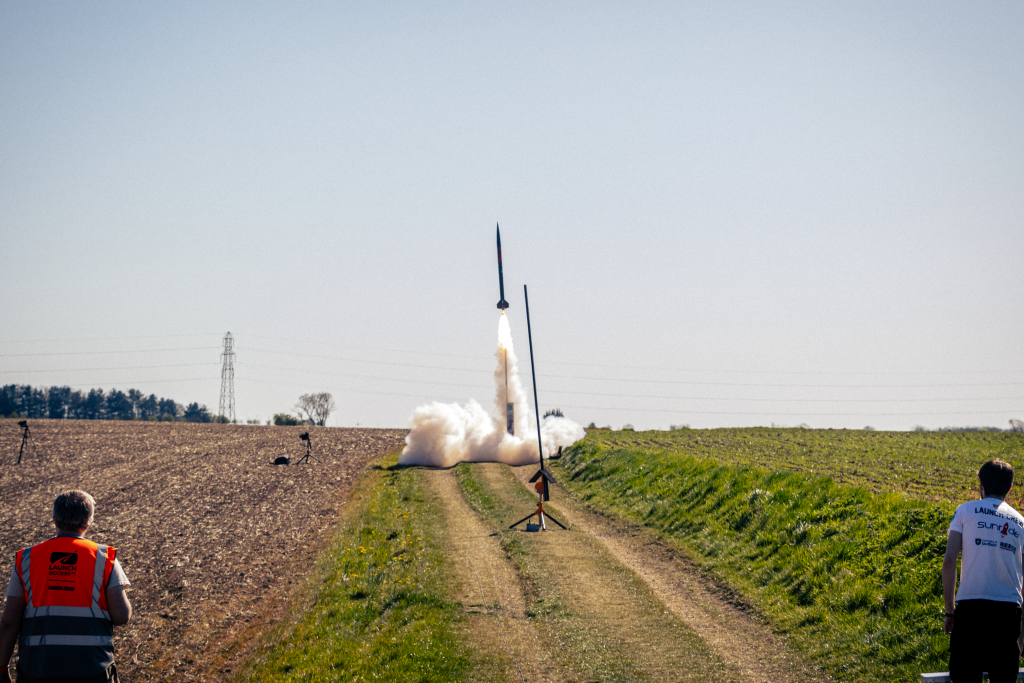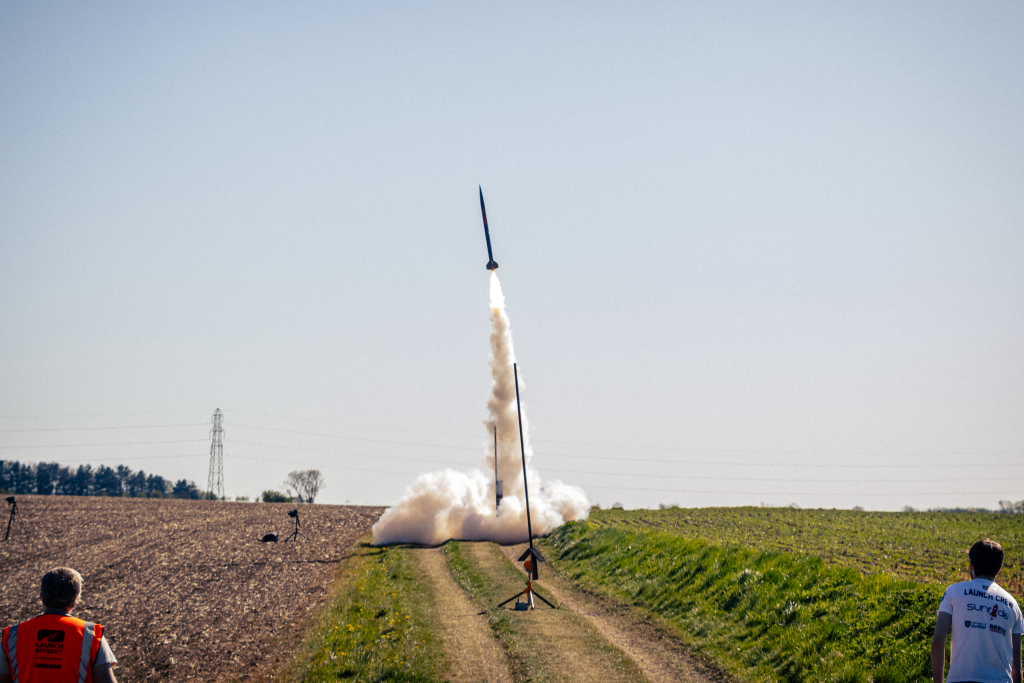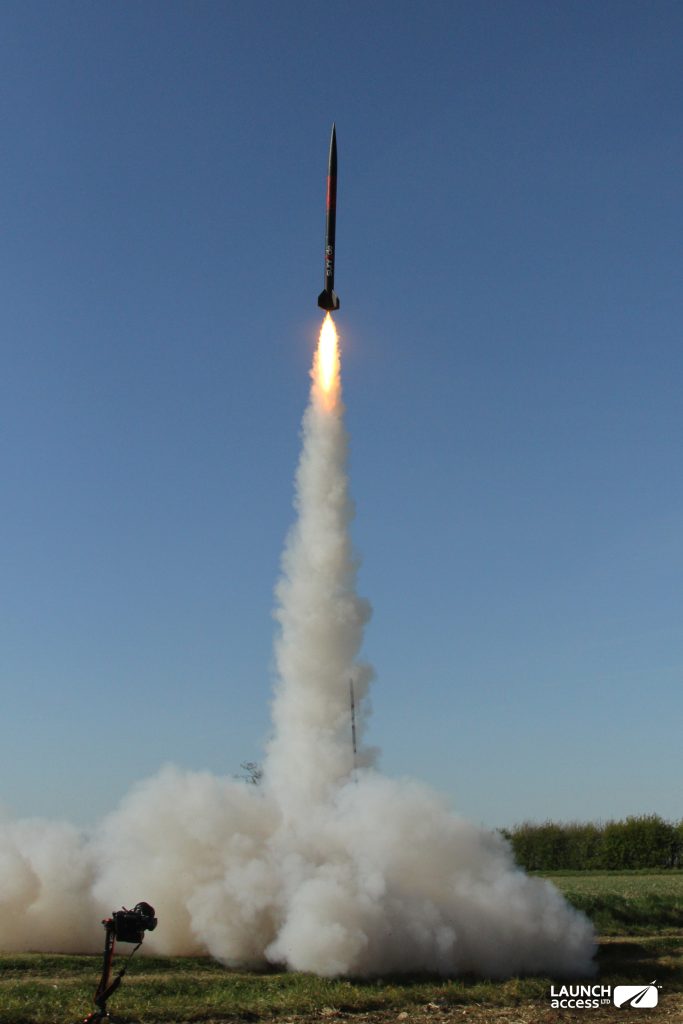BLACK ADDER
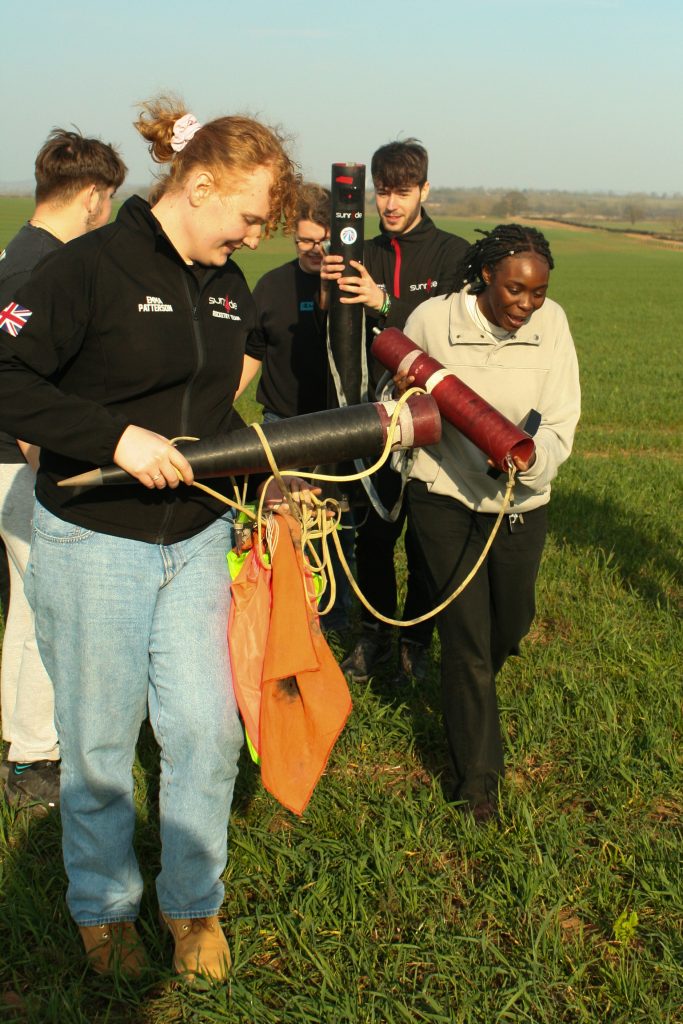
Project Sunride’s second liquid rocket – “Black Adder” – is set to be the first student built liquid rocket to launch in the UK.
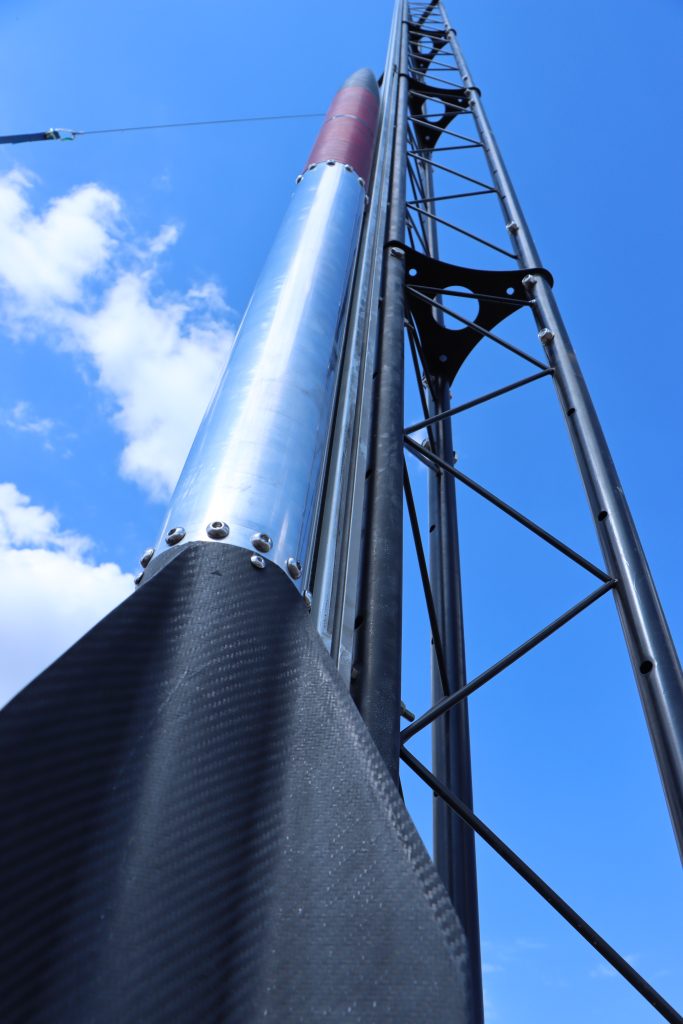
Black Adder is a 4″ rocket designed to be relaunched multiple times to become a test bed for future Sunride hardware.
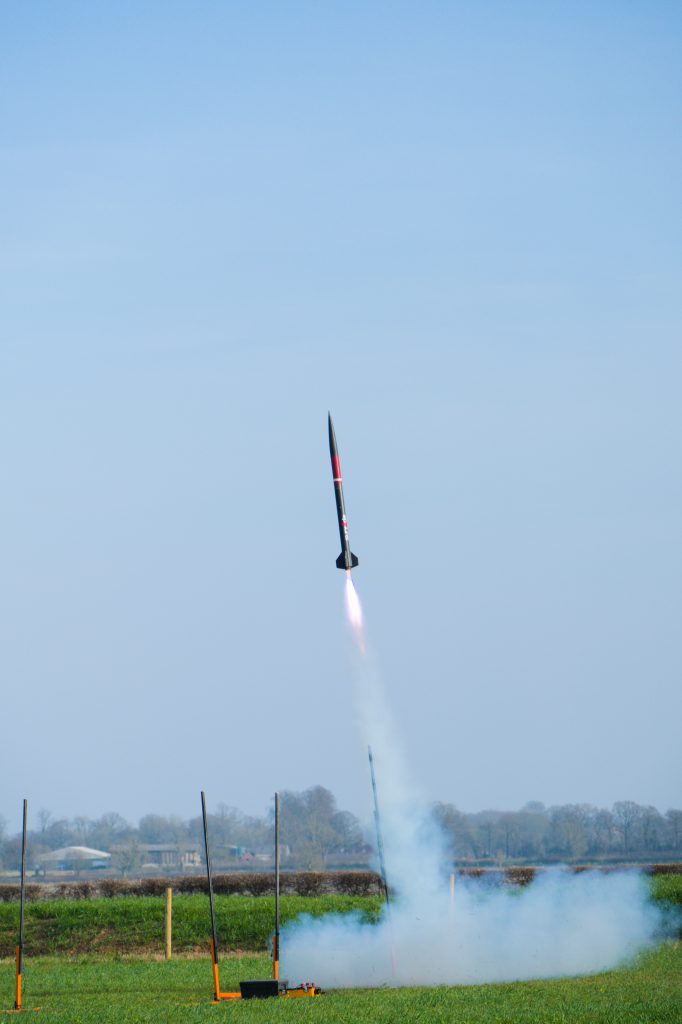
Black Adder will demonstrate a rigorous test campaign to prove the safety and feasibility of future UK liquid launches.
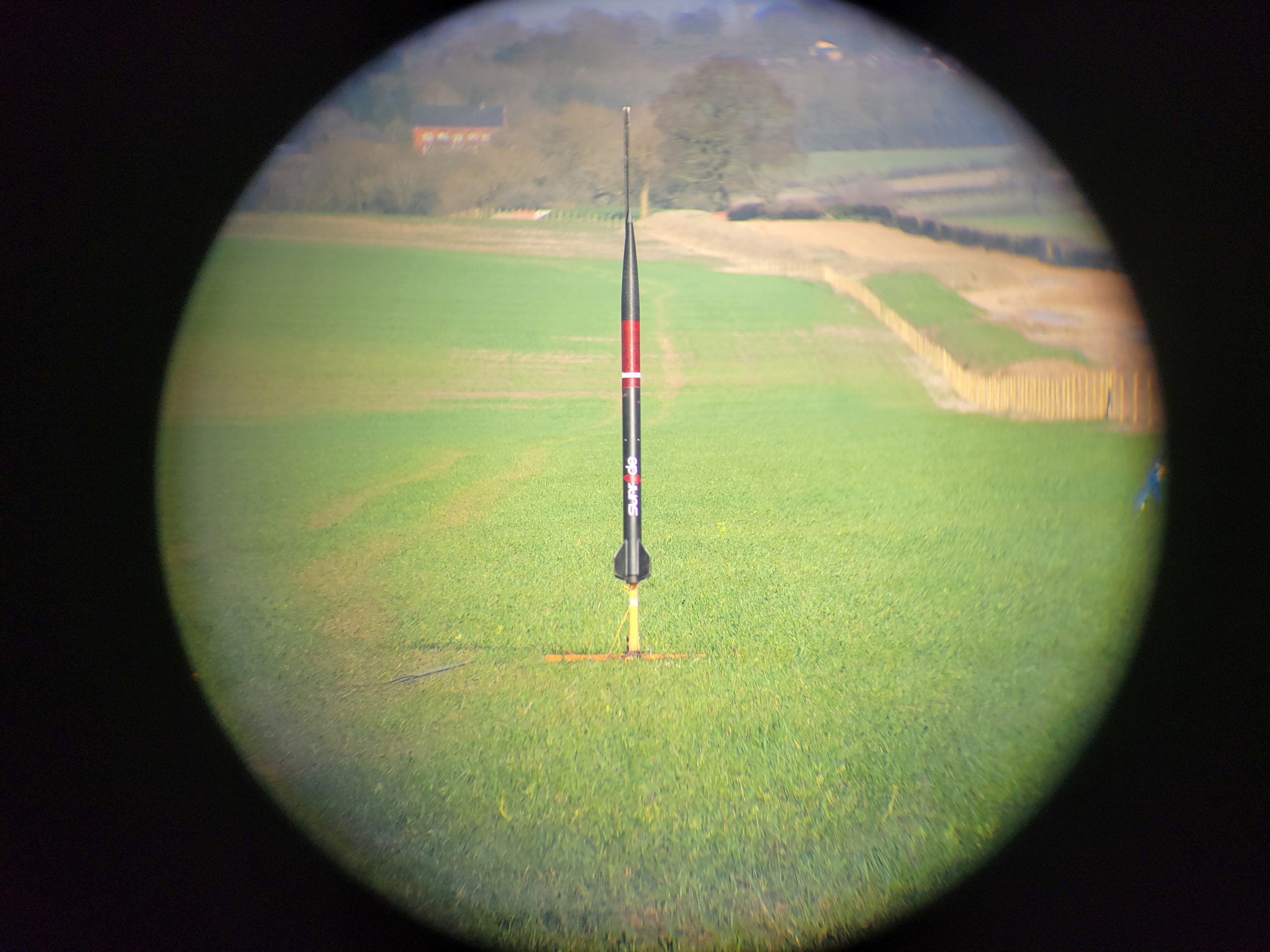
Mission Patch Coming Soon…
About
Project Sunride’s intention (cunning plan) is to make liquid rocketry more accessible by demonstrating the viability of UK liquid launches.
The team designed their own engine, “Sunfire IV” (also known as Baldrick). This engine is regeneratively cooled and 3D printed out of an aluminum alloy.
Every part of Black Adder will be vigorously tested to demonstrate the safety of the rocket before launch with significant emphasis on recovery testing and maximizing the accuracy of simulations.
Through rigorous testing the team plans to ensure the reliability and reusability of the rocket. This will providing a test bed for future components allowing more thorough testing for subsequent rockets.
Testing Schedule

Black Adder Mock I: Flight 1
The team launched the first test rocket on the 9th March. This test was primarily to test the avionics bay and recovery system as well as to provide the team with more launch day experience to allow future launches to operate smoothly.
Black Adder Mock I is a solid fuel rocket that uses the test booster from Sunride’s Karman Bravo rocket with Black Adders avionics bay.
The goal for the day was to launch once with safe recovery and be able to launch a second time should time allow, however due to a busy launch site only one launch was possible.
Despite some setbacks with the initial recovery testing and some last minute redesigns, the team achieved one full flight and a completely successful recovery.
The rocket achieved an altitude of approximately 480m which was less than the expected 618m, which was down to an unpredictable motor, but this is not an issue given the goals of the launch.
This launch day has provided the team with multiple sources of improvement for both the next mock rocket and the final Black Adder rocket. Primarily was the design of the avionics bay which performed well but had the be assembled and disassembled multiple times throughout the day. While this meant the team was able to do this quickly and efficiently, it was still slower and more complicated than needed.
The team gained valuable launch experience which should allow future launches to take less time and hopefully allow multiple launches and recoveries of a rocket in one day.
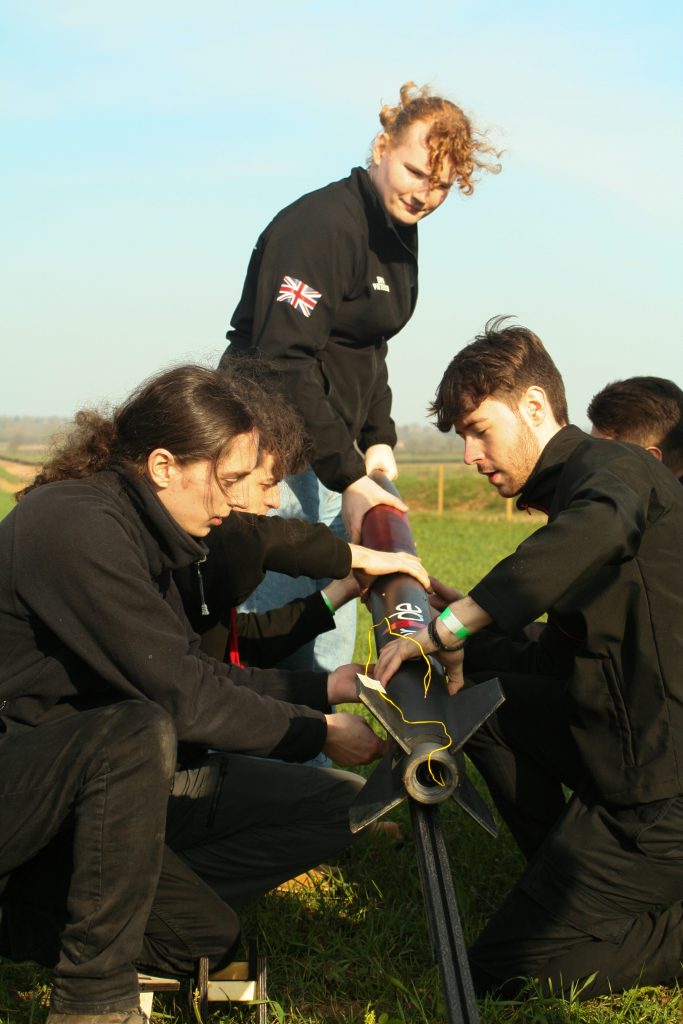

Hydrostatic Testing
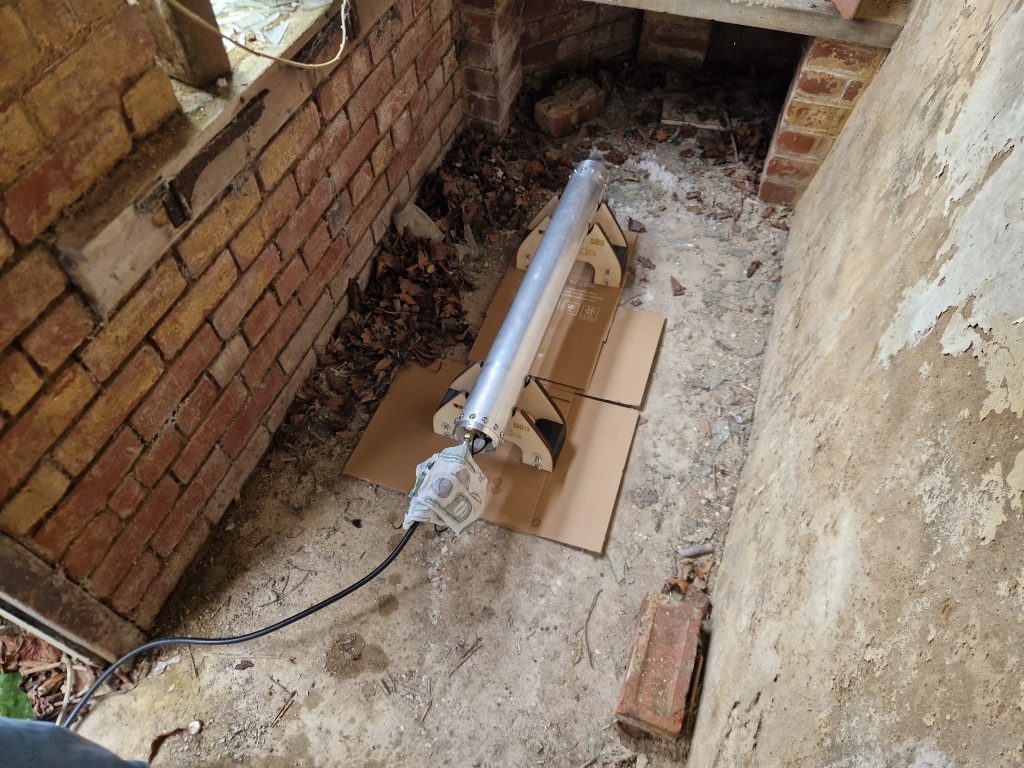
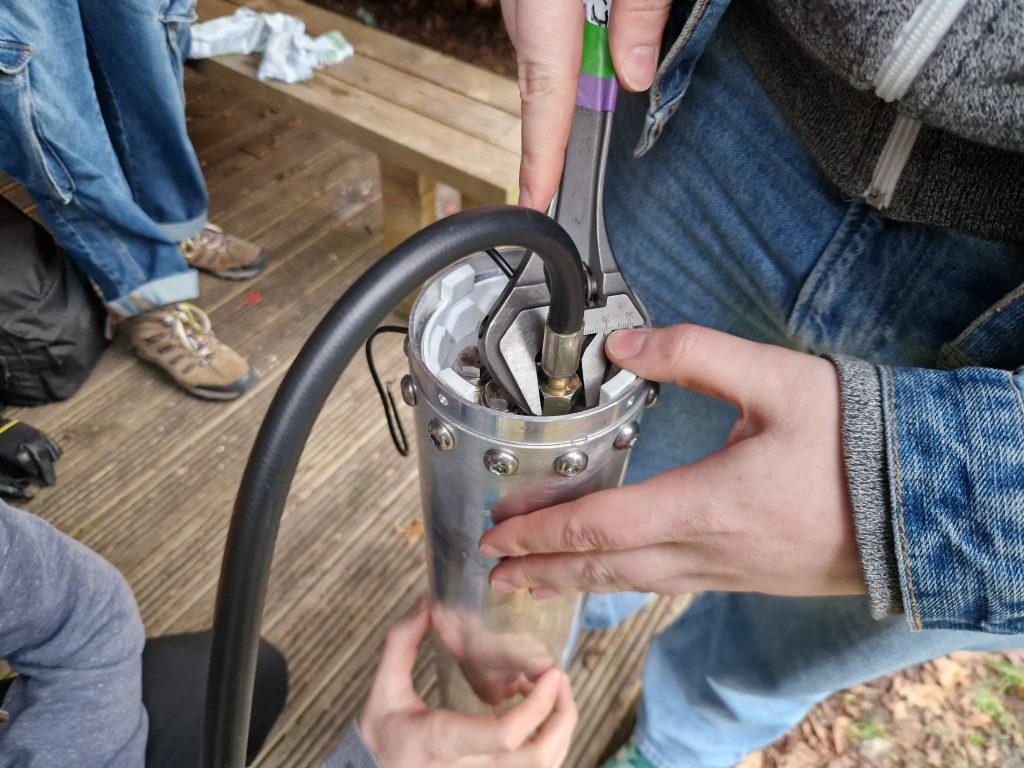
On the 15th of March the team performed hydrostatic testing of Black Adder’s tanks.
Initially the tank showed leakage at low pressure, however this was from an expected source and was temporarily fixed to allow testing to proceed.
Subsequent tests demonstrated the tank could sustain pressures up to 60 bar. This is 1.5x the MEOP (Maximum Expected Operating Pressure) of 40 bar.
The graphs below show a drop in pressure at the end of the final test (test 4). This fault was due to the hydrostatic pump rather than the tank.
Please note that the pressure transducers used in test 4 were not able to measure higher than 56 bar hence the graph flattens of in an unrealistic manner. In reality the tank sustained pressures in excess of 60 bar, as read from a manual gauge.

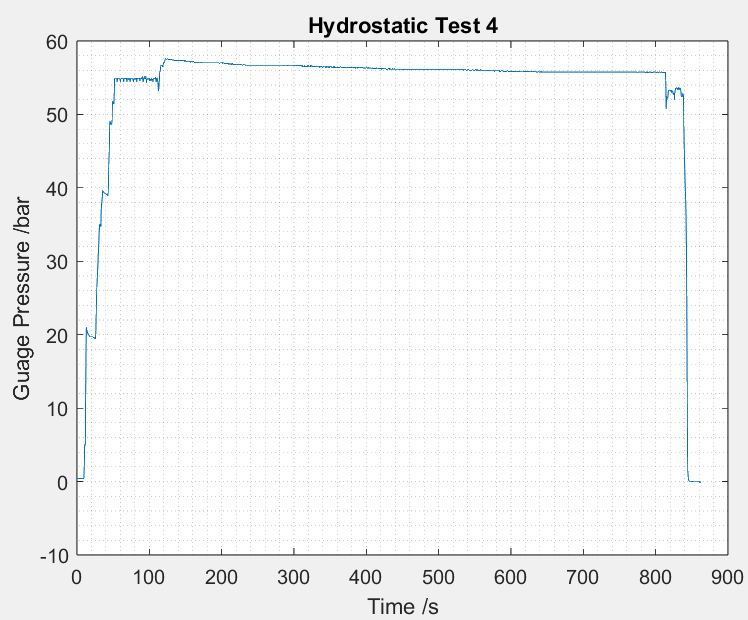
Black Adder Mock I: Flight 2
On the 6th of April 2025 the team traveled down to the East Anglia Rocketry Society (EARS) to relaunch Black Adder Mock I. This is the same rocket as was launched in March at MRC with some minor changes to the recovery packing and a reinforced bulkhead in the booster.
The goal of this launch was to continue to test and prove that we can recover the rocket so when we build the final Black Adder we are confident in our ability to successfully recover. We also wanted to give the team more launch day experience to streamline our operations and allow us to launch multiple times in a day.
This event highlighted some more areas for improvement. Primarily the needed to rethink our recovery packing to make it easier and faster. This included a change in shock chord material and packing pattern. We also identified some more areas for improvement in our avionics bay which have were implemented for the next set of launches.
We believe this launch achieved all of our goals. We had a successful recovery and were smooth and well practiced enough with our launch operations to allow us some separation testing in the morning. Furthermore the rocket sustained no damage and could be relaunched again.

